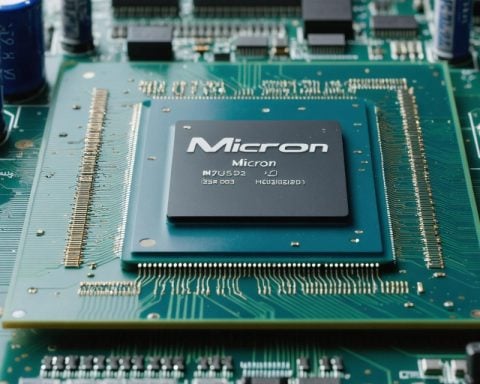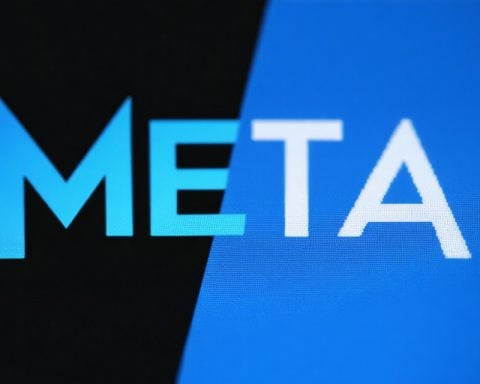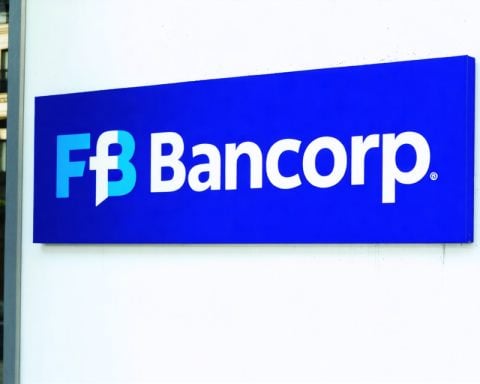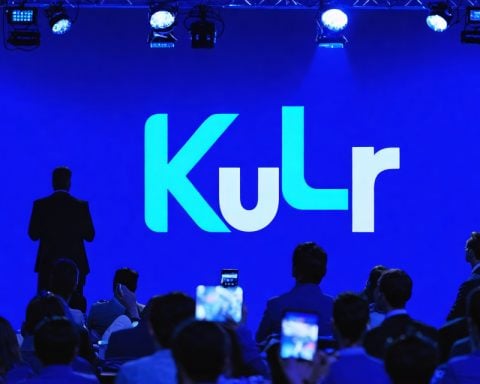- Biogen and Stoke Therapeutics have formed a multi-million dollar collaboration to develop treatments for Dravet syndrome.
- The focus of their partnership is zorevunersen, an investigational therapy targeting the SCN1A gene, implicated in most Dravet cases.
- Stoke plans to initiate a Phase 3 study named EMPEROR, aiming for global regulatory submissions by late 2027.
- Biogen will handle commercialization outside North America, while Stoke will focus on the U.S., Canada, and Mexico.
- The alliance includes an initial $165 million investment with potential milestone payments.
- Beyond financial interests, the partnership underscores a commitment to advancing SCN1A-targeted therapies for better outcomes.
The morning air seemed charged with promise as Biogen unveiled its latest venture, a high-stakes, multi-million dollar agreement with Stoke Therapeutics. This alliance isn’t just another corporate handshake; it’s a lifeline of hope for patients grappling with Dravet syndrome, a severe form of epilepsy. At the heart of this collaboration lies zorevunersen, an investigational antisense oligonucleotide that boldly strides toward targeting the SCN1A gene, the known architect of most Dravet cases.
As regulatory waters calm, Stoke Therapeutics eagerly prepares to push zorevunersen into the global spotlight with a Phase 3 study, aptly named EMPEROR. This isn’t merely a development—it’s a crusade, with pivotal insights expected to drive waves across global regulatory filings by late 2027.
While Biogen claims the helm for commercialization beyond North America, Stoke retains its grip on the U.S., Canada, and Mexico. This strategic dance involves an initial $165 million lifeline coupled with potential milestone payments, painting a vibrant picture of possibility. For Biogen, zorevunersen becomes not just a product, but a promise—a potent addition to their therapeutic arsenal.
The partnership goes beyond monetary exchanges; it’s a testament to shared vision and commitment, echoing with promise for future SCN1A-targeted therapeutics. Even amidst the ups and downs of stock ticker movements, what endures is the potential for change—real change—for those living under the shadow of Dravet syndrome.
In this intricate choreography of science and partnership, Biogen and Stoke ignite hope, blazing a trail toward a brighter, healthier future.
How This Groundbreaking Biogen-Stoke Partnership Could Revolutionize Epilepsy Treatment
Real-World Use Cases and Impact
The collaboration between Biogen and Stoke Therapeutics, centering on zorevunersen, holds significant promise for individuals suffering from Dravet syndrome—a severe form of epilepsy characterized by frequent, debilitating seizures and developmental issues. By targeting the SCN1A gene, which is intrinsically linked to Dravet syndrome, this partnership could pave the way for new, more effective treatments. If successful, zorevunersen has the potential to become a cornerstone therapy, improving not only seizure control but also the quality of life for patients and their families.
Market Forecasts & Industry Trends
The epilepsy treatment market is poised for significant growth, driven by technological advancements and increased investment in genetic research. According to a report published by Grand View Research, the global epilepsy market is expected to reach $12.5 billion by 2028, expanding at a CAGR of 7.5%. The development of gene-targeted therapies like zorevunersen could further drive this growth, offering lucrative opportunities for companies like Biogen and Stoke Therapeutics.
Features, Specs & Pricing
Zorevunersen’s Promising Potential:
– Target: SCN1A gene, linked to Dravet syndrome.
– Mechanism: Antisense oligonucleotide, designed to modulate gene expression.
– Development Stage: Entering Phase 3 clinical trials (EMPEROR study).
As this drug is still under investigation, pricing details remain undisclosed. However, given the cost of comparable gene-targeted therapies, zorevunersen could be premium-priced if approved, reflecting its potential to address a critical unmet medical need.
Security & Sustainability
Developing a genetically-targeted treatment demands rigorous safety evaluations. The EMPEROR study for zorevunersen will prioritize assessing both immediate and long-term safety. Regulatory authorities such as the FDA will closely scrutinize the trial data to ensure patient safety is not compromised.
Controversies & Limitations
While the news is optimistic, the development of antisense oligonucleotide therapies is not without challenges:
– Complexity: Designing therapies to target specific genetic mutations can be highly complex and costly.
– Efficacy and Safety: Long-term effects need thorough evaluation, with sustained safety monitoring essential post-approval.
Reviews & Comparisons
Biogen’s strategic decision aligns with industry trends where partnerships aim to tackle niche genetic disorders. Competing solutions focus on genetic modulation but vary in approach—epilepsy solutions like fenfluramine (Fintepla) and cannabidiol-based therapies (Epidiolex) treat symptoms rather than genetic causes.
Pros & Cons Overview
Pros:
– Targeted Approach: Tackles root cause at the genetic level.
– Collaborative Expertise: Leverages Biogen’s commercialization prowess and Stoke’s scientific innovation.
Cons:
– Developmental Risks: High failure rate in drug trials for genetic therapies.
– Cost: High R&D and commercialization costs likely to translate into expensive treatment.
Actionable Recommendations
1. Stay Informed: Patients and families should keep abreast of developments in the EMPEROR study.
2. Engage with Support Networks: Join advocacy groups specializing in Dravet syndrome for resources and community support.
3. Consult Healthcare Professionals: Discuss potential participation in clinical trials and alternative available treatments with medical providers.
For additional information on biotechnology advancements, consider exploring Biogen and Stoke Therapeutics.



















